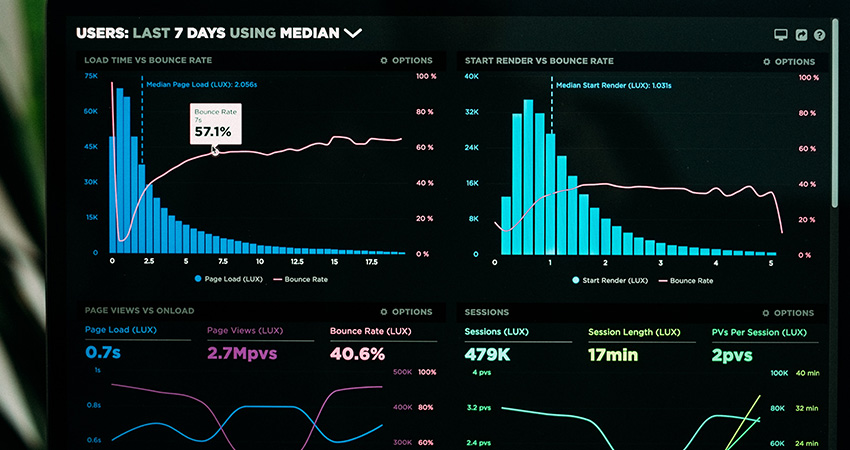Ecommerce dashboards can tend to proliferate like mice, leading to “dashboard fatigue” (credit: Luke Chesser on Unsplash)
Ecommerce professionals now find themselves at a critical juncture. While online shopping has surged, companies have gained access to an unprecedented wealth of customer data. With numerous data vendors, analytical tools and BI platforms at their disposal, ecommerce experts theoretically have the means to discern precisely how, where and when various audience segments make purchases and what influences their decisions.
Yet in practice, these professionals grapple with an overwhelming deluge of data. This leaved them with two unenviable choices: succumb to analysis paralysis, or accept that they must rely on educated guesses instead of strategic decision-making.
The Proliferation of Dashboards
The prevalent response to this dilemma has been to create increasingly detailed dashboards. The market is flooded with advanced analytics platforms that allow users to dissect, analyze and visualize data in countless ways. These tools, while valuable, share a fundamental limitation: they require manual input. Users must decide what to analyze and when, interpret data on a case-by-case basis to derive insights, and draw their own conclusions based on these limited analyses.
There are three critical issues with relying on traditional analytics platforms:
Time consuming: Ecommerce professionals cannot dedicate their entire day to data analysis. Thus, they must be selective, resulting in significant blind spots.
Reactivity: Due to time constraints, dashboards and reports are typically created in response to specific compelling events, such as unexpected drops in sales or market shifts. Reactive analysis is essential but falls short of a strategic approach, placing businesses on the defensive.
Lack of scalability: It is humanly impossible to analyze all data continuously, despite the necessity of monitoring ever-changing product data, competitors and customers.
Most ecommerce professionals acknowledge these limitations to some degree. Yet, lacking alternatives, they compound the problem by creating even more dashboards. Consequently, they suffer from dashboard fatigue and often resort to guesswork to fill information gaps.
What Ecommerce Professionals Truly Need
Ecommerce experts do not require more data or better analytics; they need a way to translate data into actionable insights rapidly. Specifically, they need to understand how their products perform relative to competitors and the market. This entails evaluating multiple competitors across various marketplaces and categories. They need to move beyond sales figures to achieve objective measures of success and overall company growth.
To attain such insights and overcome the constraints of manual analysis, you need three elements:
Proactive insights and intelligence: The capability to conduct both reactive and proactive analyses. Achieving this with existing tools demands juggling multiple platforms and deep training in data analysis and data science. This is impractical path for many ecommerce professionals.
Strategic implementation: The ability to promptly translate insights into concrete, measurable strategies, campaigns and sales goals.
Collaboration at scale: Particularly crucial for larger organizations, the insight discovery and strategy process relies on collaboration. Even the most astute analysis and finely-tuned sales strategies are futile if the right stakeholders do not receive pertinent information. This necessitates tools that facilitate information sharing and teamwork across departments.
Enter Generative AI for Ecommerce
Fortunately, this problem is not unique to ecommerce. It pervades today’s data-driven economy, affecting marketers, scientists, economists and professionals that rely on complex data. The solution already exists: generative AI.
Generative AI focuses on creating new, original content mimicking human-generated data. By learning data patterns and structures, it can generate previously undiscovered data points or insights, encompassing text, images, music, video and more. This technology, exemplified by ChatGPT for text, presents game-changing potential for ecommerce.
Imagine this scenario: you manage 10 brands in the women’s beauty and makeup category, comprising over 20,000 ASINS. Traditional tools struggle to monitor all products, including competitors, and efficiently guide strategy across thousands of items. GenAI algorithms can monitor each product, detect trends and critical signals and provide immediate, actionable recommendations, even automating certain actions.
Generative AI proactively and reactively analyzes data and scales actions across an unlimited range of categories and products. This is a monumental leap forward from the arduous manual updates your team currently performs.
Democratizing Data with GenAI
Unlike traditional analytics tools, GenAI does not require prior expertise in data analysis or dashboard building. It democratizes data analysis, serving as a personal assistant capable of informal, conversational interactions. Ecommerce professionals can engage in an ongoing dialogue with their AI assistant, effortlessly gaining real-time insights and generating tailored reports.
GenAI spells the end of analysis paralysis and dashboard fatigue, promising the realization of the long-sought potential of the data economy. Sellers can now gain comprehensive insights into their audiences, competitors and the market, enabling them to optimize their strategies effectively.
Early adopters of GenAI are already gaining a significant competitive advantage.
Oren Raboy is the co-founder of Noogata

